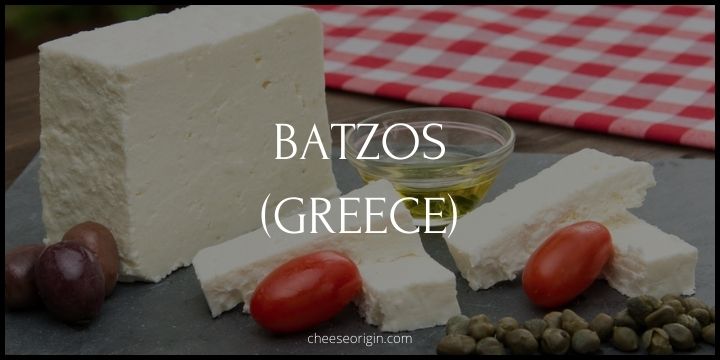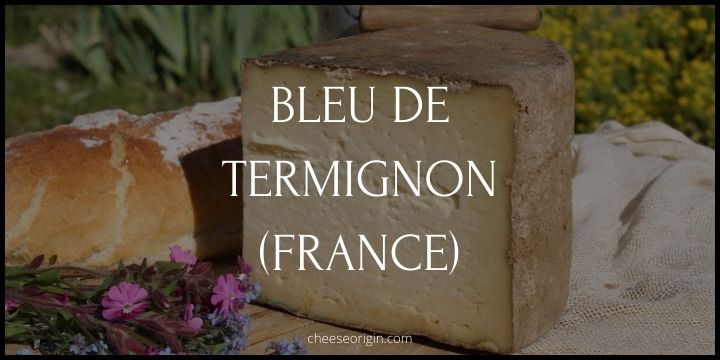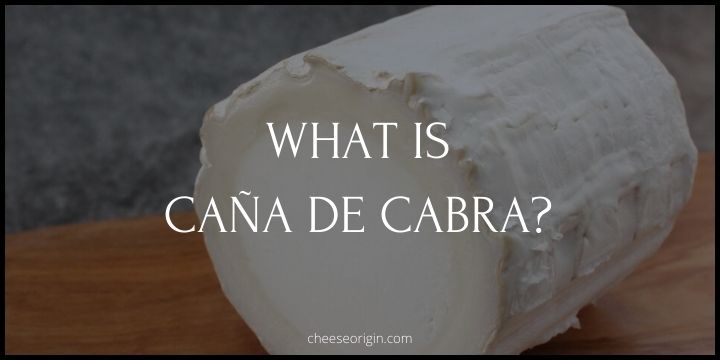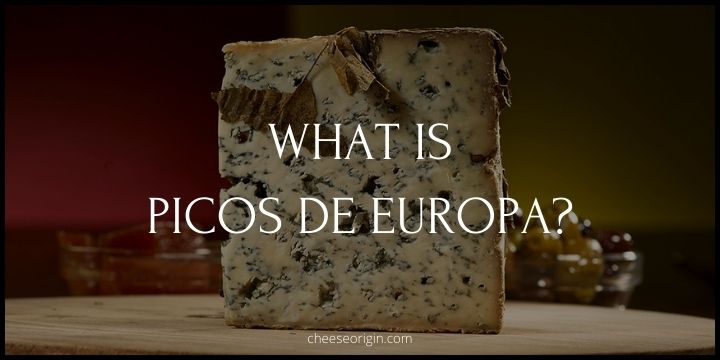What is Goat Brie? A Unique Twist on a Classic Cheese
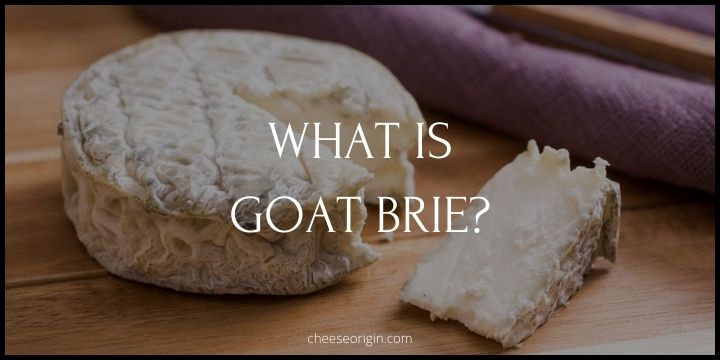
Dive into the delightful world of Goat Brie, an exceptional reinterpretation of a cherished cheese. This charming variant marries the creamy lushness of traditional Brie with the unique tang of goat’s milk.
For cheese enthusiasts seeking to venture beyond the familiar, Goat Brie offers an exciting culinary detour. In this blog post, we’ll journey through the flavor nuances and versatile uses of this intriguing cheese.
Quick Facts About Goat Brie
| Fact | Details |
|---|---|
| Origin | France |
| Milk Type | Goat’s Milk |
| Texture | Soft, Creamy |
| Taste | Mild, Slightly Tangy |
| Color | White to Pale Yellow |
| Rind | Bloomy, Edible |
| Aging Time | 5-6 Weeks |
| Fat Content | About 45% |
| Pairings | Fruits, Nuts, Honey, Crusty Bread |
| Wine Pairings | Chardonnay, Sauvignon Blanc |
| Maturity | Best Consumed Young |
| Shelf Life | 2-3 Weeks Once Opened |
| Serving Temperature | Room Temperature |
| Availability | Year-Round |
| Popular Uses | Cheese Plates, Baking, Topping for Salads |
| Nutritional Value | High in Protein and Calcium |
| Special Characteristics | Lower in Fat and Calories than Cow’s Milk Brie |
| Allergenic Information | People with Cow’s Milk Intolerance May Tolerate Goat’s Milk Better |
| Cooking Tips | Melts Well, Ideal for Grilled Cheese or Fondue |
| Storage | Keep Refrigerated, Wrap Loosely in Wax Paper |
| Purchase | Specialty Cheese Shops, Online |
What is Goat Brie?
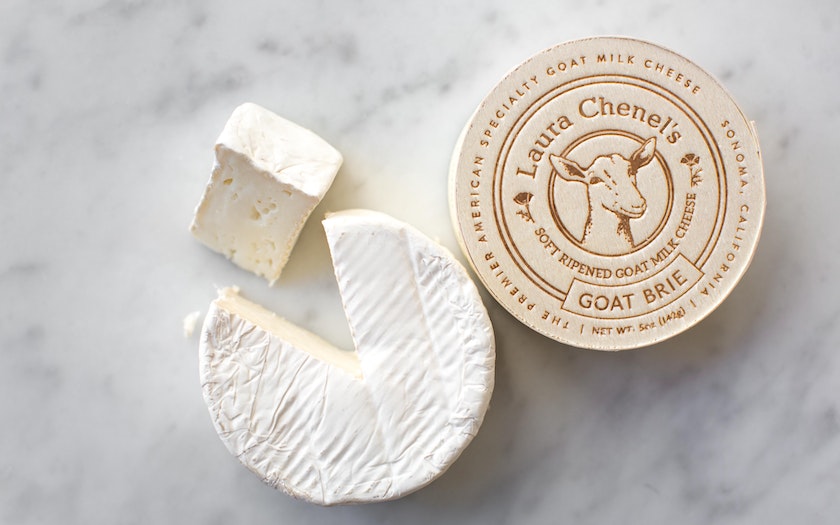
Goat Brie is made in small batches using traditional recipes, ensuring a consistent quality that sets it apart from other cheeses. Its edible white rind encases a smooth, creamy, and buttery interior that is simply irresistible. The production of this cheese involves the use of rich, luscious Canadian goat’s milk, giving it a unique and enchanting flavor profile.
This soft-ripened wheel of cheese offers a taste experience that is both familiar and novel. Goat Brie is not only delightful to the palate but also carries a social significance. Historically, French farmers revered goats for their social nature, leading to the creation of this cheese that is perfect for gatherings.
Moreover, Goat Brie is a versatile cheese that can be enjoyed in numerous ways. It’s a true delicacy when paired with your favorite preserve or fresh fruit. You can also bake it to enhance its creaminess or include it in your cheese plate for an added touch of elegance. Regardless of how you choose to enjoy it, Goat Brie is a cheese that deserves recognition and appreciation.
So, next time you’re seeking out new cheeses to try, don’t forget to include Goat Brie in your list. Remember, dairy isn’t just about cow’s milk. Expanding your horizons to include cheeses made from goat’s milk like Goat Brie can introduce you to a whole new world of delightful flavors.
What Does Goat Brie Taste Like?
Goat Brie is a unique cheese that offers an intriguing flavor profile. Depending on its production and aging, the taste of this cheese can vary quite a bit. At its core, Goat Brie is known for its mild, earthy, buttery but slightly tart flavor.
The cheese often carries a more mineral-y taste, somewhat tangier than many other cheeses. Some cheese lovers even describe it as having a grassy or subtly spicy undertone. The flavors tend to deepen as the cheese ripens, adding to its complexity and appeal.
While many goat Brie cheeses are milder in flavor than a ripe cow’s milk Brie, certain versions like the Laura Chenel Goat Brie are exceptions. This particular variety boasts a robust flavor that stands out amongst other Goat Bries.
Goat Brie Tasting Notes
- Appearance: Goat Brie usually has a bloomy, edible rind with a soft, creamy interior. The color can range from pure white to pale yellow.
- Texture: The texture of Goat Brie is smooth and creamy. As it ripens, the cheese becomes even creamier.
- Aroma: The aroma of Goat Brie is mild and earthy, with hints of fresh goat’s milk.
- Taste: Goat Brie is known for its mild, slightly tangy flavor. It often carries a mineral-like taste, with some describing it as having a grassy or subtly spicy undertone.
- Aftertaste: The aftertaste of Goat Brie is generally pleasant and lingers on the palate, allowing the complex flavors to fully reveal themselves.
- Pairings: Goat Brie pairs well with fruits, nuts, and honey. It also goes well with crusty bread and can be enhanced by white wines like Chardonnay or Sauvignon Blanc.
- Serving Suggestions: Goat Brie can be served at room temperature on a cheese plate, or it can be baked for a warm, creamy treat. It also melts well, making it an ideal choice for grilled cheese sandwiches or fondue.
- Health Benefits: Goat Brie is high in protein and calcium. It’s also lower in fat and calories than cow’s milk Brie, making it a healthier choice for those watching their diet.
- Allergenic Information: People who are intolerant to cow’s milk may tolerate goat’s milk better, making Goat Brie a potential option for those with dairy sensitivities.
- Storage: Goat Brie should be stored in the refrigerator and wrapped loosely in wax paper to maintain its freshness.
What is the Difference Between Goat Brie and Regular Brie?
Goat Brie and regular Brie, also known as cow’s milk Brie, share a similar creamy texture and edible rind that make them favorites among cheese lovers. However, there are several key differences between the two cheeses:
| Goat Brie | Regular Brie (Cow’s Milk Brie) | |
|---|---|---|
| Color | Brighter white due to goats converting the carotene in their diet into colorless forms | Cream color |
| Taste | Tangier, more mineral-y taste, often described as slightly grassy or spicy | Milder, buttery flavor |
| Origin | Often produced in areas like the Rhône-Alpes and Poitou in France | Lower protein, higher fat, and calories than Goat Brie, but significantly more folate |
| Nutrition | Higher protein, lower fat, and calories compared to regular Brie, but significantly less folate | Higher protein, lower fat, and calories compared to regular Brie, but significantly less folate |
| Texture | Softer and becomes creamier as it ripens | Creamy, but less soft than Goat Brie |
>> Click here to read our in-depth guide on Brie
Is Goat Brie a Healthy Cheese?
Yes, Goat Brie can be considered a healthy cheese for these 6 reasons:
- Lower in Calories and Fat: Goat Brie tends to have fewer calories and less fat than many other types of cheese, including cow’s milk Brie.
- High in Protein: Goat Brie is high in protein, which is essential for repairing body tissues, producing enzymes and hormones, and supporting overall growth and development.
- Rich in Essential Nutrients: Goat cheese, including Goat Brie, provides essential nutrients such as calcium, potassium, and vitamin A.
- Easier to Digest: Goat’s milk has smaller fat globules and a different protein structure than cow’s milk, making it easier for some people to digest.
- Good for Bone Health: The high levels of calcium found in goat cheese can help support bone health.
- Potential Weight Loss Benefits: Some research suggests that the type of fat and protein in goat cheese may help promote feelings of fullness and aid in weight control.
However, like all cheeses, Goat Brie should be consumed in moderation as part of a balanced diet. It’s also worth noting that while Goat Brie may be healthier than some other cheeses, it still contains saturated fat, which should be limited in a heart-healthy diet.
How to Serve Goat Brie?
- Cheese Board: Create an elegant cheese board with Goat Brie as the centerpiece. Pair it with a variety of other cheeses, fresh fruits like grapes or figs, nuts, honey, and a selection of crackers or artisan breads.
- Baked Goat Brie: Wrap Goat Brie in puff pastry and bake until golden brown. Serve this warm, gooey delight with a drizzle of honey and a sprinkle of chopped nuts or fresh herbs.
- Goat Brie Salad: Add chunks of Goat Brie to fresh mixed greens for a creamy contrast. Top with a tangy vinaigrette, toasted pecans, and dried cranberries for a salad that’s full of flavor and texture.
- Grilled Goat Brie Sandwich: Use Goat Brie in a gourmet grilled cheese sandwich. Try it with sourdough bread, fig jam, and arugula for a sophisticated twist on a comfort food classic.
- Goat Brie Pasta: Melt chunks of Goat Brie into your favorite pasta dish. It pairs well with sun-dried tomatoes, spinach, garlic, and olive oil.
- Goat Brie Fondue: Make a creamy, tangy fondue using Goat Brie. Serve with crusty bread, fresh vegetables, and cooked meats for dipping.
- Goat Brie Pizza: Top a pizza with slices of Goat Brie, fresh basil, and ripe tomatoes. The Goat Brie will melt beautifully, adding a rich, creamy element to the pizza.
- Goat Brie Stuffed Mushrooms: Stuff mushroom caps with a mixture of Goat Brie, breadcrumbs, and herbs, then bake until golden and bubbly.
- Goat Brie Omelette: Whisk Goat Brie into your morning omelet along with fresh herbs and vegetables for a protein-packed start to your day.
- Goat Brie and Fruit Skewers: For a light and refreshing appetizer, skewer cubes of Goat Brie with pieces of fruit like grapes, strawberries, or melon.
What Pairs Well With Goat Brie?
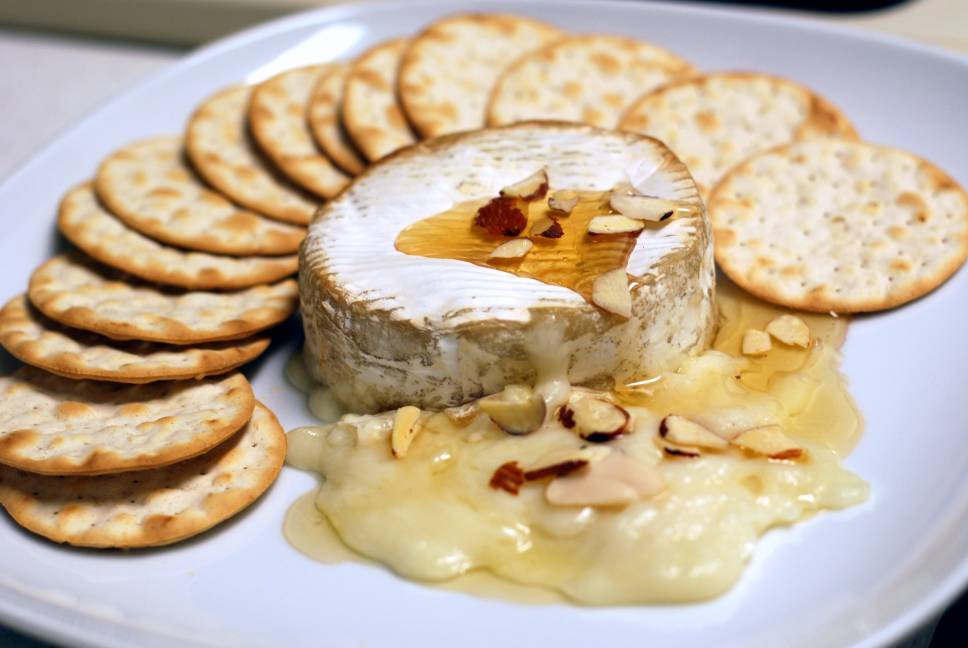
Food that goes well with Goat Brie:
| Category | Food |
|---|---|
| Fruits | Apples, Pears, Figs, Berries, Grapes, Apricots, Peaches |
| Nuts & Seeds | Almonds, Walnuts, Pecans, Pistachios, Pumpkin Seeds |
| Breads & Crackers | Baguette, Sourdough, Rye Bread, Whole Grain Crackers, Water Crackers |
| Meats | Prosciutto, Salami, Smoked Salmon, Roast Beef, Turkey |
| Vegetables | Arugula, Spinach, Bell Peppers, Tomatoes, Roasted Garlic |
| Spreads & Jams | Fig Jam, Apricot Preserves, Honey, Olive Tapenade, Pesto |
| Herbs & Spices | Thyme, Rosemary, Basil, Black Pepper, Dill |
| Desserts | Dark Chocolate, Shortbread Cookies, Fruit Tarts, Cheesecake |
| Grains & Pasta | Quinoa, Farro, Penne, Fusilli, Orzo |
Also read: What Fruit Goes on a Charcuterie Board?
Beverage that goes well with Goat Brie:
| Category | Beverage |
|---|---|
| Wine | Sauvignon Blanc, Chardonnay, Pinot Noir, Champagne, Rosé |
| Beer | Belgian Ale, Pale Ale, Wheat Beer, Lager, Stout |
| Liquor | Whiskey, Brandy, Amaretto, Cognac |
| Non-Alcoholic | Sparkling Water, Apple Cider, Grape Juice, Herbal Tea |
Also read: Best Wine and Cheese Pairings: The Ultimate Guide
Frequently Asked Questions
1. Does Goat Brie melt?
Yes, Goat Brie does melt. When heated, it doesn’t behave exactly like cow’s milk cheeses such as Mozzarella, which become stringy and stretchy upon melting. Instead, Goat Brie softens nicely under heat and takes on a creamy, spreadable texture. This characteristic makes it a versatile ingredient for a variety of dishes, including baked appetizers, gourmet sandwiches, and decadent pasta dishes. For best results, allow the Goat Brie to warm to room temperature before using it in recipes that require melting.
2. Can I eat the rind of Goat Brie?
Absolutely, you can eat the rind of Goat Brie. It’s not only safe but also adds to the overall flavor profile of the cheese. However, it’s entirely up to personal preference. Some enjoy the contrasting textures and flavors, while others prefer just the creamy interior. Enjoy it as you like!
Also read:
- What is Cambozola? Germany’s Unique Hybrid Cheese
- What is Crema Mexicana? The Creamy Crown of Mexican Cuisine
- What is Red Leicester? The Ruby of English Cheeses
- What is Wensleydale? From Monks to Modern Creameries
- What is Truffle Cheese? Savoring the Richness
- What is Babybel? A Snack-Sized Cheese Journey
- What is Humboldt Fog? A Taste of California’s Coastal Pastures


